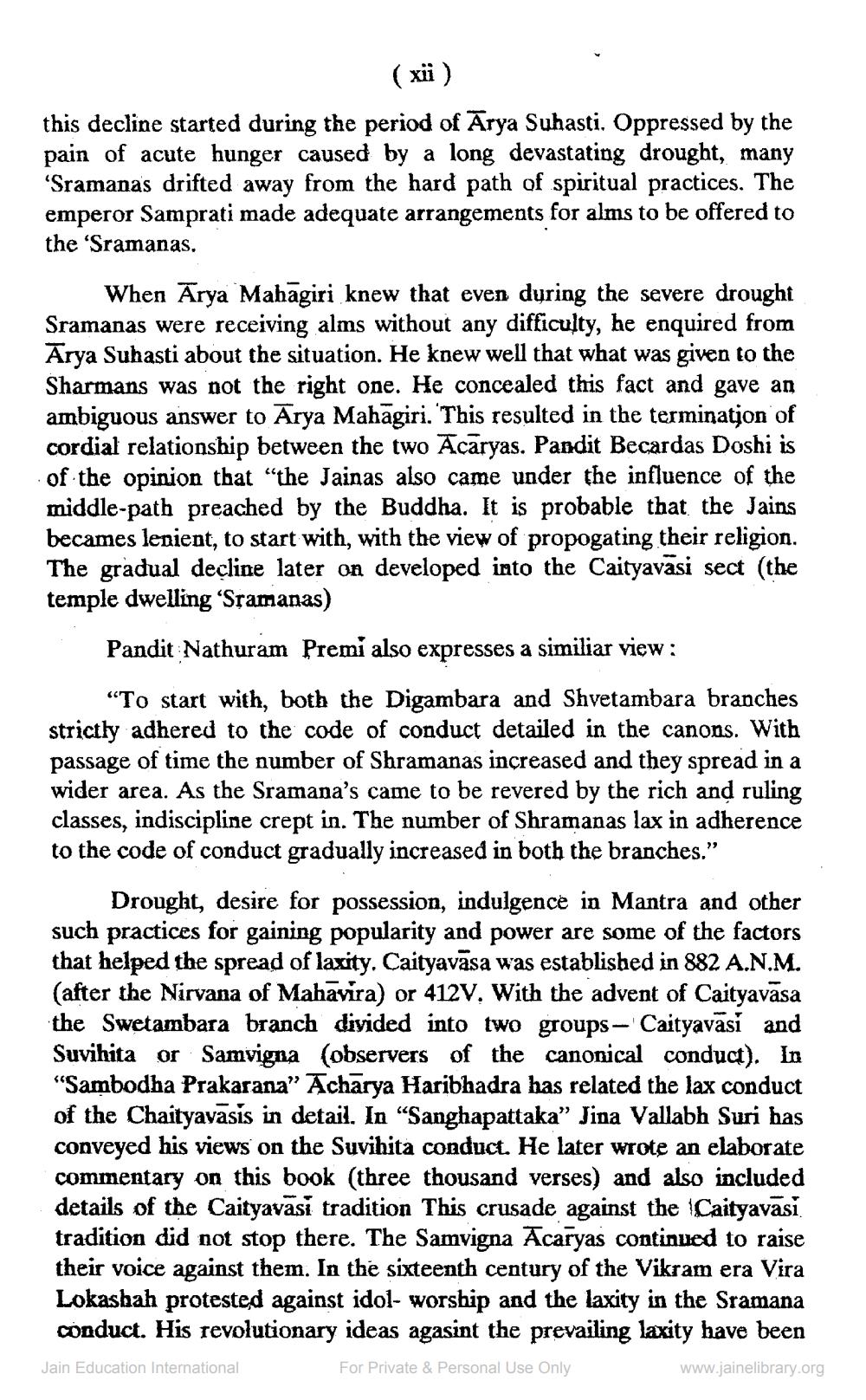________________
( xii)
this decline started during the period of Arya Suhasti. Oppressed by the pain of acute hunger caused by a long devastating drought, many 'Sramana's drifted away from the hard path of spiritual practices. The emperor Samprati made adequate arrangements for alms to be offered to the 'Sramanas.
When Arya Mahāgiri knew that even during the severe drought Sramanas were receiving alms without any difficulty, he enquired from Ārya Suhasti about the situation. He knew well that what was given to the Sharmans was not the right one. He concealed this fact and gave an ambiguous answer to Arya Mahāgiri. 'This resulted in the termination of cordial relationship between the two Ācāryas. Pandit Becardas Doshi is of the opinion that "the Jainas also came under the influence of the middle-path preached by the Buddha. It is probable that the Jains becames lenient, to start with, with the view of propogating their religion. The gradual decline later on developed into the Caityavasi sect (the temple dwelling 'Sramanas)
Pandit Nathuram Premi also expresses a similiar view:
“To start with, both the Digambara and Shvetambara branches strictly adhered to the code of conduct detailed in the canons. With passage of time the number of Shramanas increased and they spread in a wider area. As the Sramana's came to be revered by the rich and ruling classes, indiscipline crept in. The number of Shramanas lax in adherence to the code of conduct gradually increased in both the branches.”
Drought, desire for possession, indulgence in Mantra and other such practices for gaining popularity and power are some of the factors that helped the spread of laxity. Caityavāsa was established in 882 A.N.M. (after the Nirvana of Mahavira) or 412V. With the advent of Caityavāsa the Swetambara branch divided into two groups - Caityavasi and Suvihita or Samvigna (observers of the canonical conduct). In “Sambodha Prakarana" Acharya Haribhadra has related the lax conduct of the Chaityavasis in detail. In "Sanghapattaka” Jina Vallabh Suri bas conveyed his views on the Suvihita conduct. He later wrote an elaborate commentary on this book (three thousand verses) and also included details of the Caityavasi tradition This crusade against the Caityavasi. tradition did not stop there. The Samvigna Acaryas continued to raise their voice against them. In the sixteenth century of the Vikram era Vira Lokashah protested against idol- worship and the laxity in the Sramana
conduct. His revolutionary ideas agasint the prevailing laxity have been Jain Education International For Private & Personal Use Only
www.jainelibrary.org




